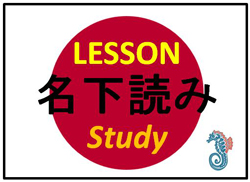
Jugyoukenkuu (or ‘Lesson Study’ as it is more widely known) is the Japanese art of teacher professional development. It involves the identification of an area of teaching that needs to be developed, by a group of teachers.
The group then plans a lesson together (the research lesson) to address that area of need (with a particular focus on specific students to monitor their progress). One teacher then delivers the research lesson, whilst the other members of the group observe the lesson. They then interview the target students to gauge their progress and engagement during the lesson. The lesson is then reviewed by the group, with strengths and further areas for development identified. The process is then repeated (with somebody else teaching the research lesson) based on this review – with a view to refining the teaching strategy being looked at.
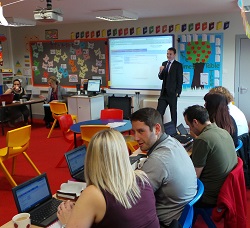
No-one would argue against the place of CPD in schools today, but I believe that for many years there has been a lack of coherent processes and management systems guiding it.
This means that many CPD activities may not be as effective as they could be because many schools do not have a clear idea of exactly what works - and what doesn't.
Despite spending £180 million on staff development and training in 2011, the Teacher Development Trust estimated that 37 per cent of English schools have rarely or never evaluated its impact.
If schools don’t have a full picture of the effectiveness of CPD, how can they know where to target their investment in order to help teachers raise attainment?
There is an art to observing lessons, just as there is an art to teaching them. Observing and evaluating the effects and impact of teaching requires particular skills that in many cases need to be developed through practice.
Performed well, lesson observation can be a hugely empowering process that gives recognition to the unique skill set required for highly effective teaching. Undertaken poorly, it could cause a dent in teachers' motivation.
The advice below supports a natural approach to observation, which appreciates that there is a story behind every lesson that links the teaching with pupils’ responses to the lesson and the progress that this is giving rise to.
It may be somewhat of an unspoken truth that some teachers instantly gauge the students' attention, whether by mastering their own pedagogy or just looking slightly scary, while others are simply swamped by a mass of bellowing noises and propelled objects. Maybe a tad too stereotypical.
There is no substitute, nevertheless, as Deputy Head Shaun Allison points out, for teachers to discuss their methods and build up each other's capacity for future development. It is the most original form of collaborative CPD and as such has potential to be the most effective. It raises morale as a team, boosts confidence for implementing new strategies and encourages constructive feedback. In his post, Shaun provides a framework, a case study and additional benefits of coaching:
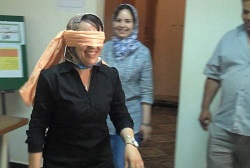
In 2009, I was fortunate enough to have a book published – The Coaching Toolkit. At the time I had been doing a great deal of work with my co-author, Mike Harbour, to set up coaching in the school where I was working. We started off with a group of interested staff and then grew it across the school – with a great degree of success.
Four years later, in a new school and a very different context, we are looking to launch coaching again. It will be the main driver for CPD in 2013-14, with a view to using our own staff to develop consistently brilliant teaching across the school. Time slots will be put aside throughout the year for colleagues to meet in pairs to have a co-coaching conversation.
Photo credit: cambodia4kidsorg
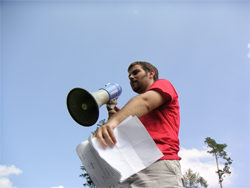
People who have read my #marginalgains blog posts will know I am going over old ground here – intentionally so – as I am looking to dig deeper towards the key marginal gains that have the biggest impact on learning. For me, formative oral feedback and questioning are the two key ‘hinge point marginal gains’ that make for great teaching and learning. My previous #marginalgains blog identified new teaching strategies for these two key area of pedagogy, but here I wanted to use this blog to reflect on what I view as the most high impact formative oral feedback strategies that I have been using in my everyday practice. I want to use my list as a reminder, each time I plan lessons, of the key strategies to use – as it is too easy to forget and slip into autopilot planning, forgetting even our most effective of strategies.
In the latest OFSTED guidance, they have clearly stated that lesson planning should not be inflexible, that teachers should react to the progress, or the lack thereof, of their students. This is heartening recognition of what we have known all along – and that is that teaching and learning are contingent activities. Learning is often problematic, changeable, non-linear, beset by a host of unique factors that cannot be exactly replicated (but with experience we can determine common patterns). We must therefore be constantly tracking the evidence of learning with as much precision and skill as we can. That is why effective teaching hinges absolutely on oral formative feedback and questioning on a lesson by lesson basis. It appears to me that the greatest benefit of experience that I observe in excellent teachers is the recognition of how and when to elicit feedback, with the nuanced understanding of what questions to ask, how and when. I have drawn upon this wealth of experience for my top ten – indeed it is my inept stumbling near the shoulders of giants that is responsible for the whole lot!
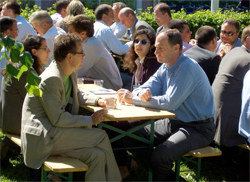
The work of a teacher is both challenging and complex and requires high standards of professional competence and commitment. However, research shows that formal professional development may not be the optimum means by which such high standards of professional competence can be achieved. The principal reason for this is that traditional CPD tends to be based on one-off events that can often be a solitary activity and can seem remote from colleagues, students and classroom practice in general.
Many teachers have begun to diverge from only using traditional CPD provision and started to address their individual and collective professional learning needs – which can often be perceived as being different by management – effectively by seeking informal professional development opportunities. An alternative model of regular peer-to-peer professional learning meetings – sometimes referred to as TeachMeets or Show and Tell sessions – is beginning to emerge as a more successful, supportive and motivating way of sharing best teaching practice with the aim of improving overall teaching and learning. Such bottom-up professional learning is more likely to be followed up and to result in innovative practices that are successfully embedded and sustained.
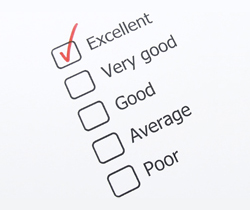
In school boards and districts around the world, teacher evaluations are becoming the norm. The hope is that by evaluating teacher performance, we can improve student performance. Yet there remains much controversy around teacher evaluations. How do you measure and rate teacher performance? Do teacher evaluations provide any real benefit to teachers and schools? And what about the students?
The answer to these questions may lie in the motivation for conducting teacher evaluations in the first place. If your motivation is to rate and rank teachers and weed out the poor performers, you'll likely only succeed in getting everyone defensive. If your primary purpose is to improve teacher performance by supporting development, you'll likely get better results. As with all employee evaluations, the best results are achieved when the goal is to support continuous growth and development.
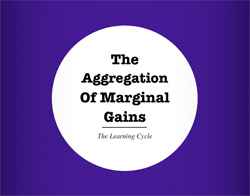
After watching ‘Road to Glory’, about the inexorable progress of the Sky Pro Cycling team, it foregrounded the mantra of “The Aggregation of Marginal Gains” that is at the core of David Brailsford’s philosophy.
In essence, it is the drive to perfect every controllable detail in the process of performance – the ‘marginal gains’ – with the result being a cumulative significant gain.
Watching Bradley Wiggins in the Tour de France, as well as the Great Britain cycling team in the 2012 Olympics was nothing short of inspirational – like most teachers it was considering how to harness the idea to make it useful in my teaching.
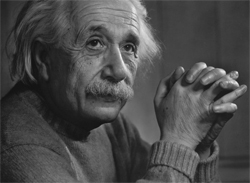
One of the things I love most about being around young children is their passionate and fierce sense of curiosity. It defines their genius. Why is the sky blue? Who discovered the world? How did the sun get so hot? Where did toothpaste come from? And my favorite: Are we there yet?
I’m not sure exactly when it happens, but somewhere between grade school and grad school we stop relishing in the question and start celebrating answers. I never want children (or adults) to underestimate the power questions hold, especially when asked of the right people at the right time.
One of my favorite lessons to teach is: ”The Art of Asking Genius Questions”; taken right from the playbook of my curiosity mentor and coach, Albert Einstein.

What do schools do to measure the impact of CPD? We link to guidance from the TDA, a Teaching Expertise article and to school policies with ideas on how schools can evaluate the impact of CPD. We also refer to a National College article on how schools can ensure that CPD is effective.
Guidance from the Training and Development Agency for Schools (TDA) on evaluating the impact of continuing professional development (CPD) explains that it can be difficult to find evidence that clearly shows the link between CPD and pupil achievement.
Therefore, it says that the crucial point to consider is what was intended to be achieved, and what impact could reasonably be expected, in any given time-frame.

A community-driven platform for showcasing the latest innovations and voices in schools
Pioneer House
North Road
Ellesmere Port
CH65 1AD
United Kingdom